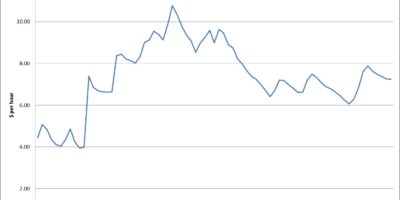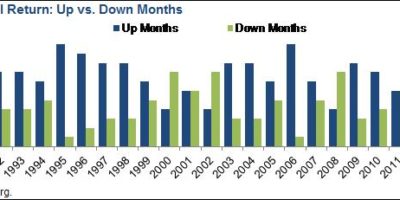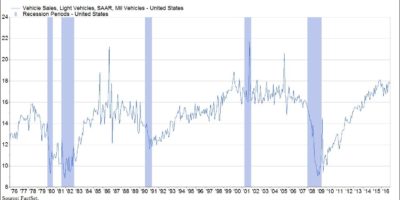
In recent years we’ve heard many arguments in favor of raising the federal minimum wage significantly above its current level of $7.25 an hour. Some states (New York and California are the largest example) have adopted legislation mandating an increase in the state minimum wage. In most cases, the proponents of a higher minimum wage argue that it should be set at $15 an hour. But why $15?
READ MORE
Today, the American Institute for Economic Research ranked the top U.S. metropolitan areas for college students. The annual AIER ranking is based on nine criteria that measure each area’s cultural, demographic and economic qualities.
READ MORE
The narrative at the end of the year will look well-reasoned, but it won’t tell the whole story. Stick to your plan and ignore prognosticators and market fluctuations from week to week.
READ MORE
At AIER, we believe the classroom walls should be both transparent and permeable to the rigors and requirements of the workplace.
READ MORE
Anyone doing their shopping in a big-box retail store this year has probably noticed that “Star Wars” is big business. But space can also provide an outlet for economists to practice their economic intuition in a playful way.
READ MORE
This month’s Business Conditions Monthly includes a section about free trade and President-Elect Donald Trump. It discusses his leverage to make changes to existing free trade deals, and the consequences of pulling out of them altogether. The piece also discusses the causes of the decrease in manufacturing in this country, and why limiting imports would be a mixed blessing for U.S. manufacturers.
READ MORE
In the new edition of AIER’s Everyday Price Index, we discuss the prices for common holiday gifts like apparel, books, and personal-care products, which are all lower.
READ MORE
Economic conditions have improved, as our economic index rose to 67 in November, up from 58 in October, according to the new edition of Business Conditions Monthly, out today.
READ MORE
I’ve discussed some reasons Americans spend more and save less than they should or even plan to. The implicit assumption in these discussions was that they had the option — in other words, that they had the resources to achieve some level of financial wellness. But as my upcoming brief in January shows, that only includes about half the population.
READ MORE
I recently came across Fred Ende’s blog on the topic of his educational professional development resolutions for 2017. I like the analogy that he uses to describe the value of a professional-development follow-up process by stating that “regular water — reflection — and sunlight — coaching/support — are needed for the best growth” of a planted seed of a teaching idea.
READ MORE
United Airlines made headlines recently with its announced introduction of Basic Economy pricing – and mostly not in a good way. Most of the coverage has focused on the fact that this plan no longer includes complimentary carry-on baggage or choice of seating, with the baggage fee recently drawing the ire of Senator Chuck Schumer. However, this new fare is just the latest example of increasing competition between name-brand airlines and budget airlines such as Spirit and Frontier airlines.
READ MORE
Increased sales of both cars and light trucks have been supported by improvements in both the labor market and financing conditions.
READ MORE250 Division Street | PO Box 1000
Great Barrington, MA 01230-1000
Press and other media outlets contact
888-528-1216
press@aier.org
This work is licensed under a
Creative Commons Attribution 4.0 International License,
except where copyright is otherwise reserved.
© 2021 American Institute for Economic Research
Privacy Policy
AIER is a 501(c)(3) Nonprofit
registered in the US under EIN: 04-2121305